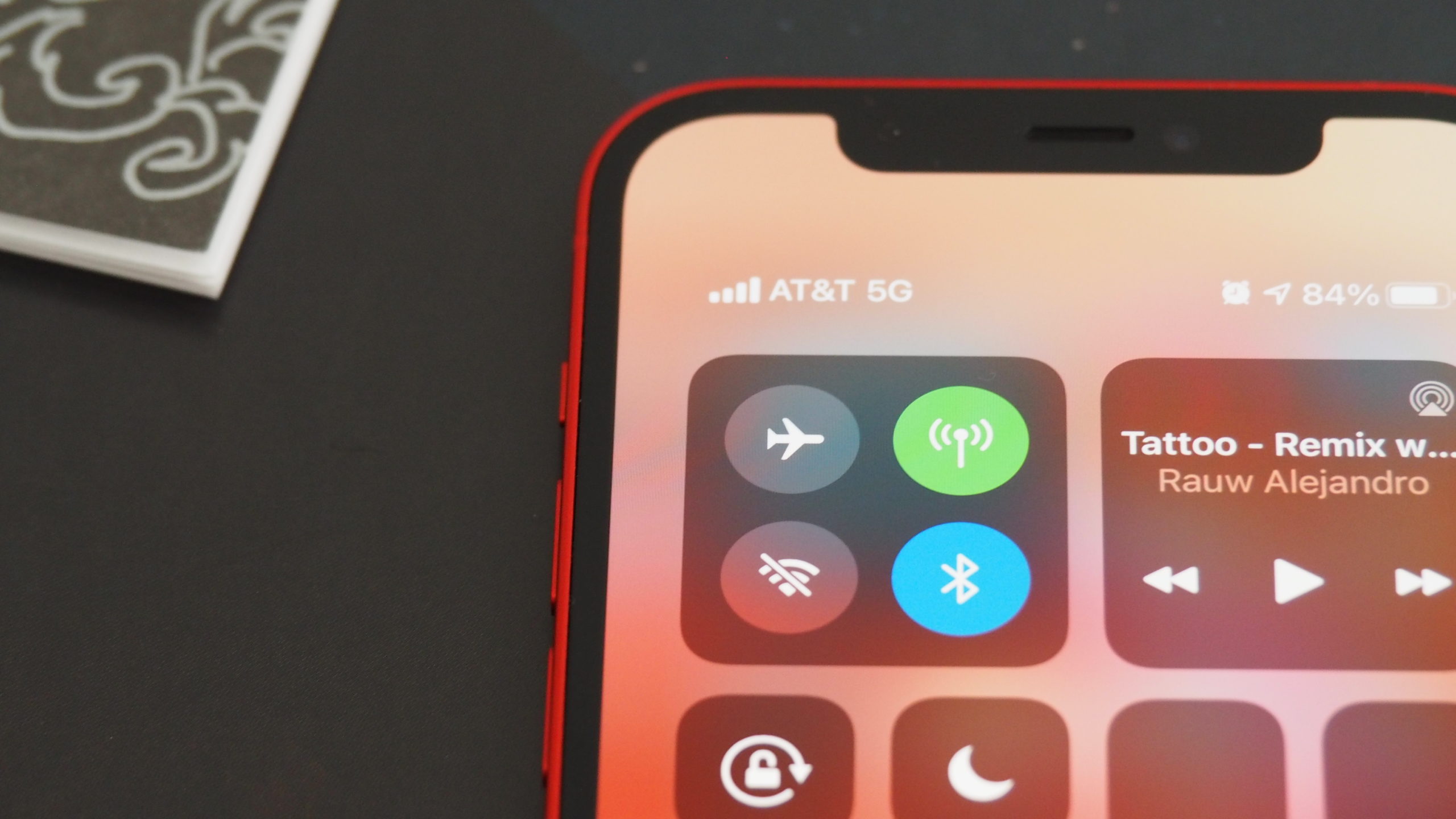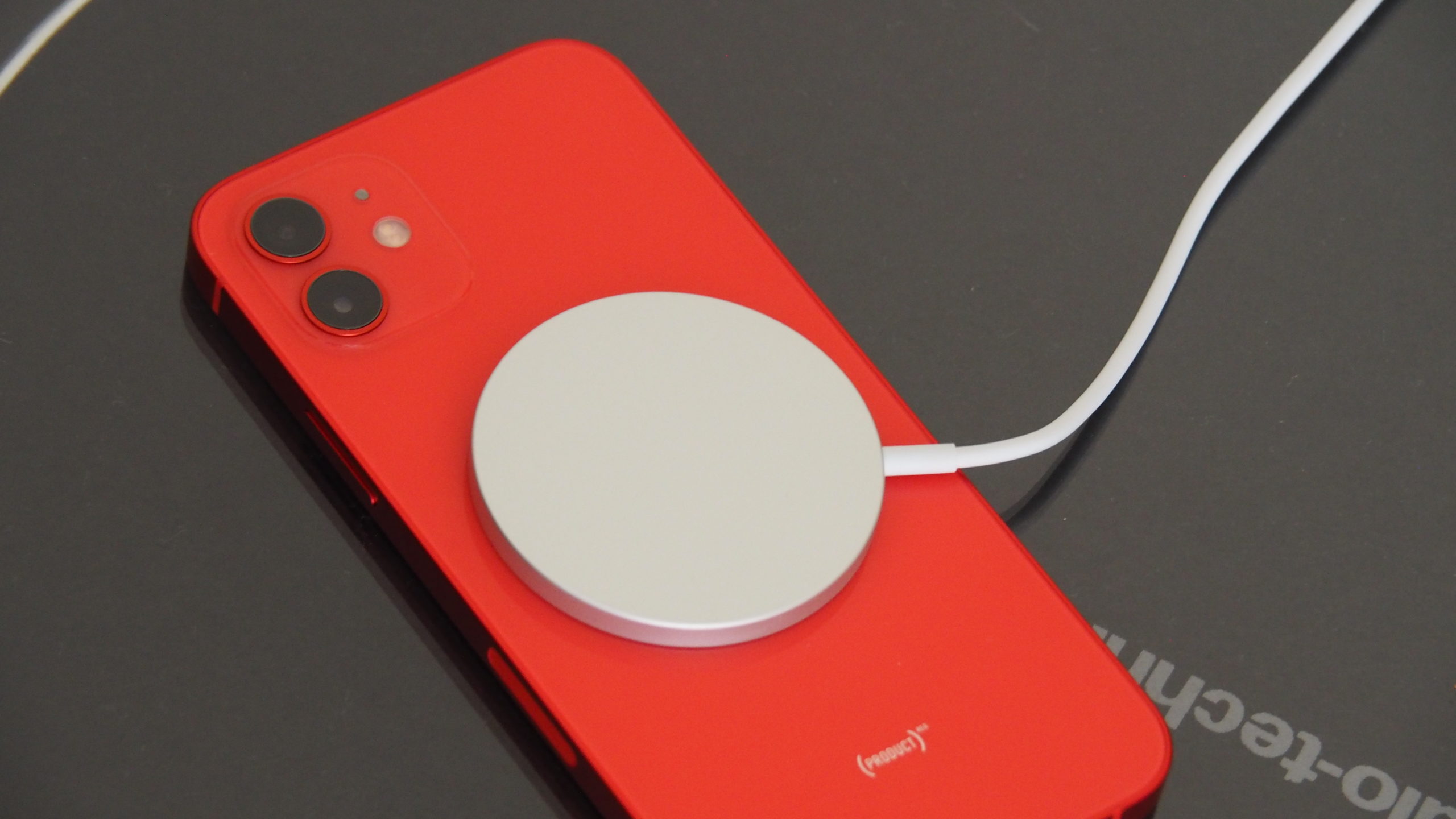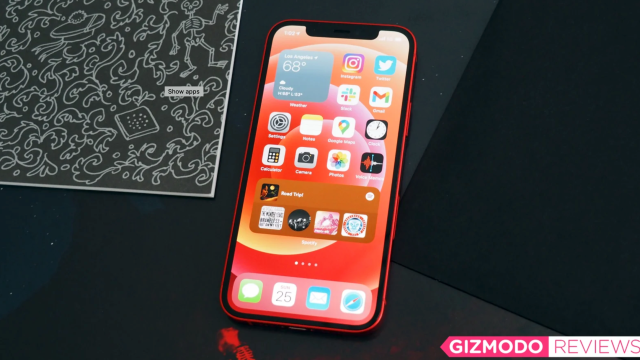With four iPhone 12 options to choose from this spring, ranging in price from $1,199 all the way to $1,599, it feels like Apple has muddied the waters a bit. That’s not necessarily a bad thing, because the company extended flagship features across the lineup. But it does make things a bit complicated. For the first time, Apple’s cheaper flagship iPhone doesn’t feel like a step down from the more expensive models, though there are a couple of trade-offs.
Namely, you get two camera lenses in the iPhone 12 instead of the three you get with the 12 Pro, and you get an aluminium body instead of a stainless steel one — though the red, mint green, and deep blue iPhone 12 shades are almost more appealing than the 12 Pro lineup’s colour range.
Here’s the deal: Shit is rough out there. Many people’s jobs are hanging on by a thread, if at all. Owning a smartphone is non-negotiable, and if you need one that won’t feel outdated in a year, the $1,349 iPhone 12 is the one to get. The differences between the 12 and 12 Pro are so slight, and the 12 feels so premium, that saving a few hundred dollars and buying the base model iPhone this year doesn’t feel like a sacrifice. (This review is of the 6.1-inch iPhone 12 — the 5.4-inch 12 Mini is due out next month and will be reviewed separately.)

iPhone 12
What is it?
Apple's base-model iPhone
Price
Starts at $1,349
Like
Gorgeous design and stunning OLED display. Produces excellent photos with its two lenses. Powerful performance and solid battery life. You don't feel like you're sacrificing much by not going with an iPhone 12 Pro.
Don't like
Digital zoom falls short; I'd prefer a telephoto lens to an ultra-wide-angle one. Higher display refresh rate and more base storage would go a long way.
Apple spent its annual iPhone event hyping the new iPhone’s speed, courtesy of 5G and the new A14 Bionic processor. But it’s the 12’s design and display that grabbed me right away. The first thing I noticed is how light it is, especially compared to the 12 Pro. That’s due to the aluminium Apple used instead of the Pro’s stainless steel, but it doesn’t feel cheap. Then there are the flat edges, which bring to mind the iPhone 4 and 5 — the pinnacle of iPhone design — and feel much easier to grip than the iPhones of recent past. Particularly when running, I feel like I have a solid hold on the iPhone 12 due to its squared-off edges.
Then there’s the 12’s OLED display, which is stunning, especially compared to last year’s 6.1-inch iPhone 11, which was $1,000 but sported an LCD panel. Watching videos and playing games on this thing is a freakin’ dream; the blacks are rich and dark and colours look more vivid and dynamic compared to an LCD screen. The 12 also features Apple’s Ceramic Shield, the hardened glass front that promises to be four times more shatter-resistant than the iPhone 11 lineup. I haven’t yet dropped this phone (yet!), so I can’t personally attest to this, but I want to believe.
Much ado has been made about Apple’s decision to stick with a 60Hz refresh rate for the iPhone 12’s display instead of bumping up to 120Hz, as we’ve seen in competing flagships. If you’ve used other devices with a much higher refresh rate, you will notice the difference. Otherwise, you won’t. Like 5G, it seems like a thing Apple needed to add to future-proof its lineup for those who will hang on to this phone for three or four years. Unfortunately, Apple went all-in on 5G and not on high refresh rates. For most people, this isn’t a big deal, but it would’ve been a nice complement to the new design.
Don’t get me wrong: The A14 Bionic is noteworthy. After you take in just how good the iPhone 12 looks, you might notice its performance. The new chip blew past all of this year’s Android flagships with the latest Snapdragon processors in our benchmarking tests. But last year’s A13 Bionic was also incredibly powerful. If you’re upgrading from an iPhone 8 or X, you’ll notice a huge jump in performance. If you’re coming from the 11? Not so much.
But it’s 5G that Apple is emphasising this year. I’ve written pretty extensively about the pitfalls and the potential of using 5G, a technology that has so far been the victim of its own hype. In my testing of various carriers’ networks across the U.S., I’ve never seen the 4 Gbps “ideal” download speeds Apple CEO Tim Cook referenced at the company’s iPhone event.
At my house in Hollywood, download speeds are faster than what I usually see with AT&T’s 4G LTE network, which the carrier still to this day misleadingly calls 5G E, but not as speedy as the hype would have you believe. AT&T’s coverage map doesn’t distinguish between the slower low-band and the blazing fast, high-frequency millimetre-wave spectrum that comprises its 5G network, so while LA is blanketed with 5G, I can’t tell at a glance which kind. I reached out to AT&T to find out where exactly I could catch gigabit speeds with the iPhone 12. The company sent me two addresses within walking distance of my house.

And that’s how I ended up in the parking lot of a Panda Express in the heart of Hollywood, arm outstretched with an iPhone 12 aimed in the direction of a 5G node. Here I finally saw gigabit speeds and AT&T’s 5G+ connectivity indicator, but still nowhere close to the 4 Gbps Cook referenced during the iPhone event. I ran several speed tests using Ookla’s SpeedTest app and consistently saw speeds in the 1.2-1.4 Gbps range. But stepping onto the footpath a few feet away from the Panda parking lot, speeds immediately dropped to 600 Mbps. Back at my house a few blocks away, speeds hovered around 130 Mbps.
To take advantage of the fast speeds once I could finally tap into them, I stood in the parking lot and downloaded season six of Schitt’s Creek to watch offline on Netflix. It took one minute to download 14 episodes — not too shabby. I wracked my brain to think of what else I could accomplish with gigabit speeds while looking like an absolute weirdo with six phones on my person and came up with nothing. As I ventured away from the Panda Express with not even a carton of my favourite sugary kung pao chicken, I watched the 5G+ icon flip back to 5G, taking the fast speeds with it.
But even if millimetre wave-based 5G could penetrate the walls of my house and deliver gigabit download speeds, it wouldn’t matter that much to me right now. I’ve been working from home with fibre internet for months. And the main reason I usually need ultra-fast connectivity while on the go is for work travel — a thing I’m not doing again for the foreseeable future. But envisioning a day when, just before boarding a flight, I can download movies, playlists, and books for offline entertainment in mere seconds (because I absolutely will never remember to do that at home days ahead of time) is truly thrilling.
One irritating thing to note: Your current phone plan might not actually support 5G. I’ve had the same AT&T unlimited data plan for the last couple of years and just assumed that, given that it was the priciest of the carrier’s offerings, the plan would be 5G-compatible. Nope! I had to switch to an equivalent plan that cost exactly the same in order to activate 5G. If you buy an iPhone 12 and can’t seem to catch a 5G signal, check to make sure that you’re actually paying for a plan that includes it.
Also of note: If you somehow find yourself always connected to a mmWave-based 5G network, pulling down gigabit speeds, your iPhone battery will probably die within hours. Fortunately, this will literally never happen. Remember the part where I had to hang out in a Panda Express parking lot to get an unfettered mmWave signal? Apart from that, I used the iPhone 12 heavily for several days without the best 5G has to offer, and even after hours of speed tests, camera comparisons, music streaming, and the occasional (OK, often) mindless scroll through Instagram and Twitter, the 12 had plenty of life left.
[related_content first=”1519995″]
Apple also created a new 5G setting called Smart Data Mode, which will offload you to an LTE signal if you’re not doing anything that requires the faster speeds of 5G. This will save your battery, and it’s a good thing that it’s on by default. You can also choose for it to always be on either 5G or LTE by opening Settings, then tapping Cellular, Cellular Data Options, Voice & Data, then selecting which data setting you prefer.
In our video rundown battery test, the iPhone 12 lasted more than 13 hours, which is a few hours shorter than rival flagships from Samsung and Google, but perfectly respectable.
Like the other iPhones in this year’s lineup, the 12 has Apple’s MagSafe charging coil built into its back, which enables the phone to snap to Apple’s MagSafe charging puck (and other accessories). At first, I thought this was really cool: I like the little snap, so I never question if the phone is charging on its pad, and I appreciate being able to pick up the phone while it’s charging and continue to use it. But it also kind of seems like a solution in search of a problem.
I’m not sure how many people even have wireless charging pucks for their iPhones — everyone I know still uses the Lightning cable and wall plug that used to come with a new iPhone in the box. (Now that that’s no longer the case, perhaps people will graduate to wireless charging.) The Lightning cable prevents you from plugging in anything while charging, but I would guess more people use Bluetooth earbuds or headphones than have any plans to buy a wireless charger.

Apple’s MagSafe charger is also on the pricier side — $65— and while it comes with a USB-C cable, it doesn’t come with a wall plug. Do you know how many USB-C adapters I have? The one that came with my MacBook. Do you know how many USB-A plugs I have? Countless. I discover new ones every time I clean my house (which is weekly, tyvm). So to use a MagSafe charger and take advantage of its fast-charging capabilities (up to 15W), you’ll probably need to spend an extra $30 on a 20W USB-C power adaptor. That’s $95. For a charger. On top of that, the puck and the iPhone get real warm when charging. If the phone gets too hot, it’ll stop charging at 80%.
Look, I myself love a good charging solution. I’m currently testing a Mophie 3-in-1 charging dock for AirPods Pro, Apple Watch, and iPhone, and I absolutely love it. It’s $200, which is kind of bananas, but it’s the closest we’ve come to AirPower, which is what I actually want and know I can’t have. Maybe when the MagSafe Duo charger for watch and phone debuts, it’ll be a more convenient solution. (Perhaps a MagSafe Trio won’t be far behind?)
I like it! But I could do without it.
All of these features — redesign, Retina XDR display, 5G, A14 Bionic, MagSafe — extend across the iPhone 12 lineup. The biggest difference between the 12 and 12 Pro is, as expected, the camera array. The 12 sports a dual-lens set-up on the back with 12-megapixel wide- and ultra-wide cams, so it’s missing the telephoto lens you get with the Pro models. As you can see in the shots below, the 12 produces mostly solid shots, but the digital zoom is lacking, particularly in low-light scenarios.
However, it does have Night Mode in both lenses — last year’s iPhone 11 had Night Mode in just the wide-angle cam — and the difference is notable. The 12 also supports Night Portraits, and while you have to play around with the background lighting to get a shot that isn’t grainy, the 12 holds its own with the 12 Pro. Check out some comparison shots below.
You’ll have to stay tuned for my iPhone 12 Pro review (coming later this week!) for a deep dive into the differences between the two phones’ cameras, but as a person who uses a telephoto lens far more often than the ultra-wide, I wish Apple had gone with a telephoto/wide-angle pairing for the 12’s dual-lens array. The ultra-wide is great for dramatic shots, but the telephoto is more useful for daily life.
I’ll be honest: When it comes to the iPhone 12 vs. 12 Pro, I prefer the Pro. Three camera lenses do make a difference. But you still get a whole lot of phone for $1,349 if you don’t want to splurge on the Pro model. If you’re upgrading from an older iPhone, the camera quality and performance will blow you away. More importantly, the iPhone 12 is a truly great iPhone that will continue to be good for years to come.
README
- The iPhone 12 is the best iPhone for most people.
- Apple put most of the pricier Pro’s features in the iPhone 12, including 5G, the A14 processor, an OLED screen, and redesigned body.
- I wish Apple had chosen a telephoto lens instead of an ultra-wide-angle one, but both lenses offer Night Mode, which is a plus.
- MagSafe is fine! I still long for the promise of AirPower, though.
